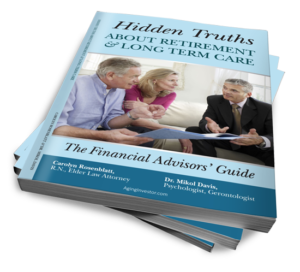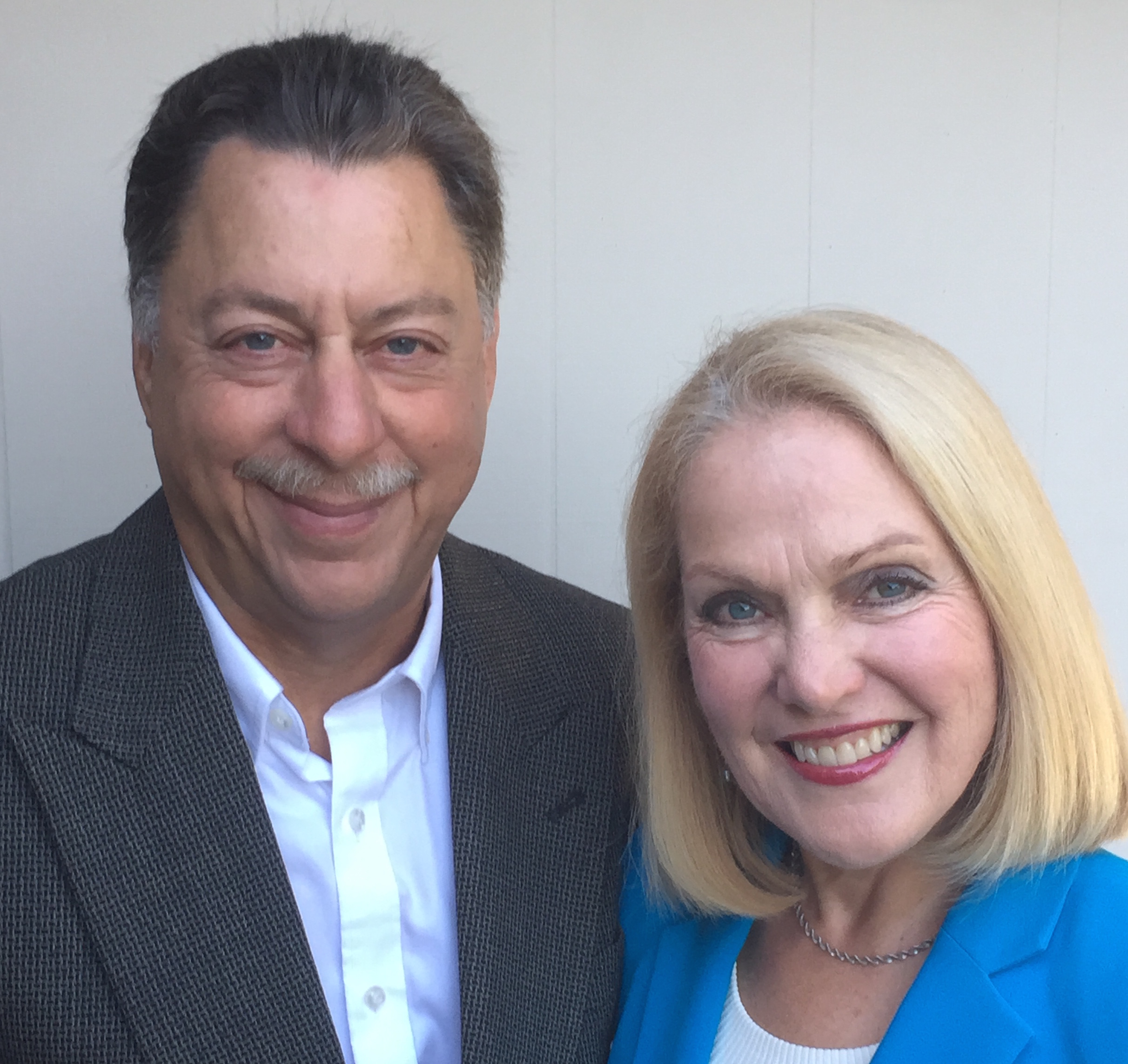
Oct 20, 2022 | aging, aging in place, cost of aging, cost of long term care, finances for elders, financial advisors
Carolyn L. Rosenblatt, RN, Attorney, AgingParents.com
Every year since 2004, private long term care insurer, Genworth has conducted a national survey to determine the average costs of care at home, and in facilities. The data is broken down by state, with the median price listed. The bottom line: the cost of care is rising significantly in all the four general areas Genworth studied. It is also rising in the areas it did not study. Inflation is affecting how much it costs elders and families to keep them at home or in any living situation. The Genworth study includes home care, adult day health, assisted living and nursing homes. There is a lot more to consider than what the Genworth study shows. Long-term care is not limited to the things this insurer pays for when you buy a product from them.
The median monthly costs in the U.S. for two of the services studies are outlined in the 2021 report from Genworth:
Homemaker services (help with cooking, cleaning, transportation, shopping, etc.) $4957
Home Health Aide (personal care: eating, bathing, dressing, walking, bathroom, etc.) $5148
In a book we wrote for financial planners, Hidden Truths About Retirement & Long Term Care (AgingInvestor.com, 2017), we detail how about 70% of us are going to need some kind of long term care in our lives. And we discuss how most of us live in The Great American Fantasy that it won’t happen to us, that we will be fine and die quietly in our sleep at age 100 in full control of our faculties. In the book, we urge financial advisors to help clients get out of fantasy and into the reality that dollars need to be set aside to pay for what Medicare does not cover; so called “custodial care” that is not medical in nature. That includes things like home care workers, home modification to accommodate disabilities, assisted living and other things many people eventually need. We discuss the advantages and disadvantages of all the choices.
Here are actual costs we learned about from clients in two real cases.
Four Years of Home Care
One of them, described in our book from 2017, was about a man who lived to be 95 and never wanted to be in a facility. His wife hired caregivers to keep him at home. Long term care insurance defrayed some of the cost but most came out of pocket. The bill for the 24/7 care he received over four years of increasing dependency: $2M. There was nothing unusual about his needs. He just got more frail and had more care issues over time. That’s typical of how some of us are going to age. At the end, he had four caregivers in shifts, a specially fitted van with special wheelchair, a home stair chair, a lift to get him into the bath, numerous other kinds of devices to help and huge increases in the cost of maintaining the home with all the help. That cost would be significantly higher in today’s dollars.
The Outrageous Cost Of A Difficult Elder’s Care
In another, current case we work with at AgingParents.com, there is an elder with unusual needs. The family has a very difficult mother with dementia. She is calm until certain personal care must be given. Her mental state is confusion. She hallucinates and thinks she is being attacked when the family member or paid caregiver attempts to clean or bathe her. She gets very combative, with kicking, biting and punching those next to her. She calms down after the personal care but it takes two people to keep her from hurting anyone. She is astonishingly strong for a woman in her 80s. Her physical assaults happen multiple times a day when she needs cleanup. The family will not put her into a care home. No home would accept her this way. Rather, they would medicate her into a stupor so she would be more manageable. The family won’t have that. Her lighter medication at home allows her to be engaged with those around her in a good way. All except at those time of the close personal care.
This family is paying $50,000 a month for home care workers from two different agencies to help them. They can’t do it alone. They can’t manage with just one caregiver at a time. It takes two at a time to do the job. The cost is draining their assets and there is no end in sight. As this keeps up, the family will be spending $600,000 in 2022 to care for their mother.
Assuredly, not every elder is as difficult as the combative and confused mother in this case. But some elders do become very hard to care for. If one has strong feelings about not over-medicating a loved one, the choices can get very expensive.
It can take a good strategy to manage the care of an elder at home. It is not as simple as just buying long-term care insurance when the elder still can qualify for it. It may take working with a competent financial planner who understands that the limited things this insurance pays for do not fully protect anyone from out-of-pocket costs. Many additional things may be needed to maintain an aging loved one at home, where most people want to be. Financial planners tend to promote having income to pay for “the lifestyle to which you are accustomed”. No one is accustomed to a lifestyle of needing 24/7 care at home. However that is a reality anyone needs to discuss with a competent financial advisor, as it can happen to any of us.
Overall, this is a wake-up call for anyone who has not thought through how to pay for long term care. If it is your own aging loved one, you can’t ever be sure that they won’t need assistance from a paid source in the future. If it is yourself, at or near retirement age, be wise about how you look at the need 70% of us may have as we get older. Long-term care can be simple for some. It can be a huge, heavy burden for others. The wise retiree will consider the risks of getting old, living long and the likely need for paid help at some time in their future.

Dec 30, 2020 | aging, aging in place, aging investor, cost of aging, cost of long term care, elder investor, elderly, finances for elders, financial advisors, handling money for seniors, investor, long term care, medicare, retirement planning, senior investor, seniors finances
In retirement planning discussions, we see this statement financial professionals often publish for their clients:
“The average lifetime out of pocket costs for healthcare for a 65 year old couple retiring today is $285,000.”
Why should you never say this? It’s misleading at best and at worst, it’s false. From my own research as to where the number came from, I found it in government sources calculating Medicare deductibles and supplemental insurance payments, and co-pays Medicare does not cover. Generally, the out of pocket calculation refers to non-covered “medical” costs. But when that term gets diluted to mean “healthcare” it is far too broad and it simply ignores the reality that long term care is indeed healthcare. Medicare does not cover that at all, except for limited stays in skilled nursing homes following hospitalizations. It is noteworthy that when the Federal government uses data to calculate what out of pocket medical costs will be, the subject of long term care is entirely omitted.
The “average” lifetime cost of long-term care for two people in this country is far greater than $285,000. According to research by long term care insurance provider, Genworth, seven in ten people will need long term care at some point in their lives.
The comprehensive Genworth cost of care study, done annually, was published for 2020. Consider that at some point, with longevity being as it is, an older person with multiple medical conditions may need 24/7 care. Almost everyone will tell the advisor that he or she wants to stay at home and age in place. What will that cost at home in any of the most expensive states? In California, for example, the median cost of in-home care with a non-licensed caregiver full time, 27/7 is $252,000 per year! This is not medical care, in the sense that no skilled nursing is part of it, no doctor’s prescription is involved, and the agencies that supply unlicensed home care workers can charge whatever the market will bear.
A truthful financial professional will never mislead aging clients, or those planning for retirement by telling them that all they have to worry about for their future out of pocket healthcare costs is $285,000. Prudent financial advisors will themselves look annually at the Genworth study and help clients calculate the costs of long-term care, which every person should know about.
Costs of care, whether at home, in an adult day health center, in assisted living or in a skilled nursing facility vary widely from state to state. Looking at national median costs can be of little benefit to anyone doing retirement planning. Instead, using data from the Genworth study, one can look state by state for the real, most applicable numbers derived from where your client lives or plans to retire.
From my perspective, financial advisors are not educated to fully understand the difference between government provided statistics about out of pocket, non-Medicare covered medical costs and what we mean by long term care. They are quite different terms. It is distressing to me, with substantial experience in nursing, to see the fallacy of statements published by financial professionals about what retirement planning should include. Clients will be shocked to find that their own experience with having to pay for long term care out of pocket is not what their own advisor told them years before.
If you are in the retirement planning business and you want to serve your clients well, bear in mind that the data telling us that seven in ten people will need long term care at some point is likely true. Don’t fool yourself into thinking that retirement planning is just fine if a couple puts away enough to generate $285,000 for out of pocket medical costs. They also need to plan for how to pay for long term care, which they are statistically likely to need. That cost can destroy the most carefully laid plans for retirement income.
As a real-life example, take a client of ours, “George” at AgingParents.com, where we offer advice and guidance to families with aging loved ones. The advice encompasses legal, financial and healthcare issues as well as diminished capacity issues. George is 98 years of age and still sharp, though with some memory loss problems. He was wealthy at one point, after two successful careers. He owns his own home and wants to stay there for the rest of his days. His physical health is fragile and he now needs 24/7 help. He hired a good agency to provide in-home care. He spends in excess of $300,000 a year for caregiving alone, not counting the cost of everything else involved in home ownership, food, recreation, and out of pocket medical costs. Those medical costs involve dental surgery and equipment he needs at home. He has less than $400,000 left in savings. What if he lives another two to four years?
As you can see from this example, George is not a rare case. Many people do live into their 90s and beyond. Many start out with financial security, only to see assets rapidly depleted as the cost of care escalates to heights no one wanted to think about in retirement planning.
The Takeway
If you pride yourself in doing great retirement planning with clients, get real. Sit down with the data and find out what your clients might expect to need if they live long and require help at home or elsewhere. Tell the truth about it. If they need long-term care insurance to feel secure, talk about it. If they have sufficient assets to make it to 100 or so with full time care, they don’t need to get long term care insurance but they will need to have access to sufficient cash to cover the actual, not fantasy, costs. Above all, be clear in your own mind about what “out of pocket medical costs” means as compared with long term care costs. You are the key to these honest calculations. You can be the hero of the retirement planning story when you present an honest picture to every client you have.
By Carolyn L. Rosenblatt, RN, Attorney, AgingInvestor.com
About Carolyn Rosenblatt and Dr. Mikol Davis
Carolyn Rosenblatt and Dr. Mikol Davis are co-authors of The Family Guide to Aging Parents (www.agingparents.com) and Succeed With Senior Clients: A Financial Advisors Guide To Best Practices and Hidden Truths About Retirement and Long Term Care. Rosenblatt, a registered nurse and elder law attorney, has more than 45 years combined experience in her professions. She has been quoted in the New York Times and, Wall Street Journal, Money magazine and many other publications. Davis, a clinical psychologist and gerontologist, has more than 44 years experience as a mental health provider. In addition to serving his patients, Davis creates online courses and products to assist professionals and the public with understanding aging issues. Rosenblatt and Davis have been married for 36 years.

Dec 8, 2020 | aging, aging in place, cost of aging, cost of long term care, financial advisors, handling money for aging parents, long term care, retirement, retirement planning
Few things are more stressful than family disagreements, especially related to helping an aging family member. You’re invited to a VIP Virtual Event: How to Resolve Family Conflicts, Care, Control and Money Approaches from Legal, Psychological and Compassionate Perspectives
Wednesday, December 9 I 4:00 – 5:00 pm Pacific Standard Time
Featuring special guest speakers Carolyn L. Rosenblatt, RN, Attorney and Dr. Mikol Davis, Psychologist of AgingParents.com
RSVP david@eleganceatnovato.com (Link will be provided with RSVP)
The first 20 attendees to RSVP will receive “The Family Guide to Aging Parents: Answers to Your Legal, Financial and Healthcare Questions,”  by Carolyn L. Rosenblatt.
by Carolyn L. Rosenblatt.

Jun 18, 2019 | aging, aging investor, cost of aging, cost of long term care, declining health, elder investor, elderly, finances for elders, financial advisors, financial judgement, long term care, nursing home, resources for senior, resources for seniors, retirement, retirement planning, senior investor, seniors finances
An Important Question For Your Clients Contemplating Retirement
Longevity is increasing, as millions of Americans are living to 90 years and above, the U.S. Census Bureau reports. Will any of these long-lived folks be the parents of your current clients? Some clients reaching retirement age themselves will be dealing with the challenges of their aging family members, even as they plan their own retirement years.
One critical question perhaps not built into your calculations for retirement income needs should be whether your clients can reasonably expect to have to support their aging parents. As reported by NPR citing the Census Bureau report, nearly 20 percent of 90- to 94-year-olds live in nursing homes. Among those 95-99, about 31 percent are in nursing homes. And in the 100+ population, 38.2 percent live in nursing homes. Who pays for that care?
Most financial advisors have a basic understanding that Medicare benefits are very limited when it comes to nursing home care. Post hospitalization, the maximum benefit is 100 days and most people do not receive even that, due to qualification requirements. For those who have to live in nursing homes long term, rather than for shorter stays involving rehabilitation such as physical therapy, the costs are paid out of pocket. The exception is for the lowest income elders. For them, Medicaid pays the cost of long term nursing home care. For everyone else, a long stay in a nursing home can wipe out an older person’s assets. The financial burden then falls on family who may have the means to prevent the impoverishment of their loved one.
Some adult children will not allow Mom or Dad to live in a nursing home long term. Maybe it was a promise they made to the aging parent. Essentially, it is no one’s first choice of where to go when care is needed. If a family has some assets but does not want to wipe out their own retirement income by paying for nursing home care or even full-time home care, the most cost effective solution is to take in the aging parent.
There is a cost involved in this choice as well, and it extends to many factors beyond money. Every family relationship in the household is impacted. Some adult children are not patient, not willing and not good at caring for an impaired aging parent in declining health. For others it is seen as an honor and a final chance to give back to the parent in gratitude for what the parent did for them over a long lifetime. Individuals vary in their perspectives, ability and willingness to take in an aging loved one.
Some families take in an aging parent and pay for part-time help, providing a significant part of the caregiving themselves. Others pay for assisted living for an aging parent, but that is not suitable for those who need care around the clock. Others allow a parent to spend down their assets until they can qualify for state paid nursing home care. The parent is then placed there somewhat as a last resort.
No matter what choice a client will make about an aging parent, it is important that the financial professional in their lives helps them see the big picture and plan according to anticipated needs for both the client and the elders for whom they feel responsible.
The Takeaways
- Longevity is creating an issue for families who are facing years of decline in aging parents who may not have the means to pay for care on their own.
- Responsible financial advisors must raise the question with every retiring client: is there someone in your life that you will likely have to support financially during your retirement?
- Advisors and families alike must consider and plan for how any essential financial support should be handled by adult children of aging parents. Take in the parent? Supplement the parent’s income by paying for home care or assisted living?
- When the means are not available to offer financial support, and the physical needs for care are extensive, it sometimes becomes necessary to allow the aging parent to become impoverished and to qualify for Medicaid. Medicaid does pay for long term nursing home care.
- For those with sufficient investment income expected, financial support for aging parents can be part of an overall retirement planning strategy. It is up to the financial professional to help with this process.
Carolyn L. Rosenblatt, RN, Attorney, AgingInvestor.com ©AgingInvestor.com™
If you the financial professional need a clear explanation of the actual costs of long term care, whether at home, in adult day centers, assisted living or skilled nursing, get the facts so you can plan with clients. It’s all laid out for you in Hidden Truths About Retirement & Long Term Care, available now. Click here to get your print, digital, or audio copy.
About Carolyn Rosenblatt and Dr. Mikol Davis
Carolyn Rosenblatt and Dr. Mikol Davis are co-authors of The Family Guide to Aging Parents (www.agingparents.com) and Succeed With Senior Clients: A Financial Advisors Guide To Best Practices. Rosenblatt, a registered nurse and elder law attorney, has more than 45 years combined experience in her professions. She has been quoted in the New York Times, Wall Street Journal, Money magazine and many other publications. Davis, a clinical psychologist and gerontologist, has more than 44 years experience as a mental health provider. In addition to serving his patients, Davis creates online courses and products to assist professionals and the public with understanding aging issues. Rosenblatt and Davis have been married for 34 years.

Feb 21, 2019 | aging, aging investor, cost of aging, cost of long term care, declining health, elderly, finances for elders, financial advisors, handling money for aging parents, handling money for seniors, health, long term care insurance, resources for senior, resources for seniors, retirement planning, senior citizen investor, senior investor, seniors finances
It used to be that we could think of retirement in a kind of predictable way. People lived into their 70s perhaps, and we measured retirement by that. We used tables, algorithms and other tools to tell us how much we should save and how much we could spend in retirement. And it was all based on assumptions that may no longer apply.
Life expectancy for a woman in the U.S. in 2018 was 84 years. For a man, the figure is 80 years. Those averages do not take into account the fact that well educated and financially secure people live longer than average. This is presumably based on the notion that people who know what a healthy lifestyle is and who can afford the best medical care will outlive those who do not have those advantages. In my own county, for example, which has a high proportion of elders compared to other counties in California, one wealthy city shows a life expectancy for men of 93 years.
Suppose that your aging client lives to be 93, having retired at age 65. That’s 28 years of retirement. What the algorithms don’t clarify is what you, the advisor needs to plan for with your client during the last decade of life, from 83-93. No formula is going to help you with the individual discriminations you need to make concerning your client’s risks for care and how to assess and plan for them. They can be a substantial cost, out of pocket, not covered by Medicare, and absolutely necessary.
The way we age is determined by two main factors: hereditary tendency and lifestyle. Our genetic makeup directs only about 30% of the equation. The other 70% is driven by the way we choose to live our lives. There are plenty of folks who think that a healthy lifestyle is just too much bother. They avoid exercise, eat whatever they feel like eating, never learn to manage stress and say they’d rather die a few years sooner than give up their habits, which their doctor advises against.
Here’s the problem with that belief. Leading an unhealthy lifestyle does not just cause you to “die sooner”. Rather, it may likely cause you to live with impairments, disabilities and a need for expensive long term care for chronic health conditions. These can go on for decades.
Take obesity, for example. Over two-thirds of Americans are overweight or obese. Obviously excess weight increases our risks for all manner of health issues, including diabetes, heart disease, high blood pressure, and strokes. When a doctor makes a diagnosis of one of these, the person doesn’t typically just die on the spot and save a lot of expense later on. No. The medical providers will keep the person going with medications, surgery in some cases, lots of diagnostic monitoring and trips to the doctors. These chronic conditions usually lead to disability late in life, particularly when more than one of them exists in the same person.
If you have aging clients, you definitely need to understand health risks in a basic way, so that you can help your clients set aside funds for the care they are likely to need in the last years of their retirement lives. All of the chronic conditions I mentioned are manageable with an effort toward a healthy lifestyle but for those who do not wish to do the work involved, you can bet on a likely need for long term care. While you can’t predict the future, you can plan for risk. It’s what you do.
My own mother in law had high blood pressure and chronic kidney disease for decades. She worked vigorously at diet, exercise, social activities and other components of a healthy lifestyle. Heredity was not on her side. She lived to be 96. During the last 3 years of her life, she needed help. She moved to a seniors’ community where help was available and eventually, she paid for private caregivers. Her cost of living at the last part of her life was $120,000 a year. If this were your client, would he or she have at the ready $360,000 to pay for care? How about if there was no pursuit of a great lifestyle? The care expense could easily be 10 years.
The takeaway here is that advising for longevity needs to include the skill of assessing fundamental health risks that create a need for out of pocket, long term care. You don’t need to be a doctor and you can’t predict everything, but you can do what is reasonable to help your client plan. Ask the right questions. Keep track of your client’s general health picture.
To learn more about what to look for and what to ask, get Hidden Truths About Retirement & Long Term Care, available at AgingInvestor.com and on Amazon.
By Carolyn L. Rosenblatt, RN, Elder law attorney, AgingInvestor.com

Feb 5, 2019 | aging, cost of aging, cost of long term care, custodial care, declining health, elderly, finances for elders, financial advisors, handling money for aging parents, handling money for seniors, health, long term care, nursing home, resources for senior, resources for seniors, retirement planning, seniors finances
The financial services industry often refers to retirement planning for the future with aging clients in terms of “housing choices”. This reflects some degree of misperception about what happens as we age. For healthy people of retirement age, there is little interest in planning for the need for care and planning for loss of independence. People usually resist talking about it. We don’t choose to lose our independence. It happens. It is up to the advisor to raise it if you want to advise for longevity. The subject is emotional and can be difficult.
Where we need to get help when we can’t be independent any longer is really a choice about care, rather than housing. This is not house shopping. Does a client want to pay for care in her own home when that time comes? Most would say yes, they want to remain at home. They then must calculate what a home care worker costs and whether that is the best way to receive the help they are likely to need one day with their activities. Can the resources be available to enable that choice of where care will be given?
If an elderly client is living alone and can’t manage at home anymore without assistance, there are indeed choices, often driven by the degree of care needed and the cost of getting it. Elders may not be interested any longer in maintaining a house, cooking, shopping, and other necessary chores. For them, assisted living may be desirable because their daily lives will be different and free from the burden of the household that has become unmanageable. The choice to go to assisted living is usually not one a client is going to make because of wanting to downsize into an apartment for its own sake. Rather that is the price of going to the place where assistance is on hand. Again it is to receive care, not because they love the idea of not having their home any longer. For many elders, downsizing from a house to an assisted living apartment is a difficult adjustment, required because of physical or mental changes of aging. From that perspective it is a choice forced upon them.
A factor every advisor should know is that the likelihood of living alone increases with age. Almost half of women age 75+ lived alone in 2010, according to the Institute on Aging. The “choice” of a different living arrangement is brought on by safety and care concerns, often raised by their adult children.
It will be good for every advisor who wants to help clients plan for longevity to consider that their role is to introduce the issue of possibly needing care in the future, as about 70% of us will one day. If your client has you in her life, she already has housing. Planning for “housing” is a misnomer. Focus on places and choices where care can be delivered. Having no care plan can be disastrous, as sudden health crises can force decisions without considering the cost of care in advance.
In helping to educate your client about where he or she can receive care, the costs of all the offerings available in most areas are spelled out in detail in our book, Hidden Truths About Retirement & Long Term Care. You can develop quick expertise on the subject there. Skilled advice about longevity for your aging clients requires knowing your numbers, what care options are available where they live and how much they can expect to spend for that care. Smart advisors gather the data before a crisis happens and urge clients to look at it with them.
By Carolyn L. Rosenblatt, RN, Elder law attorney, AgingInvestor.com

Jan 30, 2019 | aging, aging in place, cost of aging, cost of long term care, declining health, diminished cognition, elderly, finances for elders, financial advisors, financial capacity, handling money for seniors, long term care, nursing home
Most advisors who even ask this question of their retirement-aged clients never spend time on it. About 90% of those asked say they want to remain in their own homes as long as possible. That sounds fine. Until one faces physical decline, cognitive impairment or both. The advisor providing competent guidance about financing aging at home had better know the facts.
None of us like to think about losing physical ability or needing help. We abhor the thought of losing our total independence. In our view at AgingInvestor.com, the only advice clients are getting is about the long term picture is whether or not to purchase long term care insurance. Since most people don’t do that, the actual costs of living at home can boggle the mind. It’s the best advisor’s obligation to educate your client about the risks of the plan to age in place, just as it is your obligation to educate them about balancing their portfolios. You are giving the client added value if you take the time to talk them through the risks and dollars they may need to have available.
Here are some briefly stated facts from a real case in which an 89 year old wanted to age in place and his wife promised he would never have to leave home.
At the outset of his declining health, he had about $3M in invested assets. His portfolio was healthy and balanced for his age, according to conventional wisdom. He began to lose his ability to walk due to multiple medical problems. His wife hired home helpers, three days a week at first. As his conditions progressed he needed more and more help. He had to have a wheelchair, and a special van. A stair chair was installed in their two-story home. By the time he reached age 95, he was spending over $150,000 a year on care and assistance around the clock. In the space of time during which he was steadily losing independence until he passed away at 95, his assets were depleted to the tune of $2M. He lived in a higher end market for the needed help but the reality is that in any market, the kind of care he needed would be very expensive.
For him, aging in place was more costly than a skilled nursing facility would have been. Home modifications, private caregivers, (none of whom were licensed nurses), equipment, medications, adaptive devices, etc. drained his resources by 2/3. And not everyone has as much invested as he had to even start the journey. His wife had her own assets and she paid the cost of household maintenance, taxes, food, and utilities with her funds. Had she relied on him for those things too, there would likely have been little left at the end of his life.
It is not all doom and gloom however. Many clients live rather well in their last years without all the care this gentleman needed. Some get by with family caregiving help, and some have fewer medical conditions. But if you are going to competently help your clients plan for longevity, it’s essential to understand the real out of pocket costs of aging in place or anywhere else outside the home. If you want to add value to your services to older clients, know what they need to know to properly anticipate what can happen with living into one’s 90s and beyond.
Learn all the actual costs of care for every aging client option in our book, Hidden Truths About Retirement & Long Term Care. Be well prepared to walk your client through the scenarios they could face in their futures. You distinguish yourself from other advisors when you sharpen your knowledge in planning for longevity.
By Carolyn Rosenblatt, RN, Attorney, AgingInvestor.com

Jan 28, 2019 | aging, aging in place, aging investor, cost of aging, cost of long term care, custodial care, declining health, diminished cognition, elder investor, elderly, finances for elders, financial advisors, financial capacity, financial elder abuse, financial judgement, handling money for seniors, health, long term care, nursing home, resources for seniors, seniors finances
Your clients are getting ready for retirement. You’ve done the calculations, balanced the portfolio and advised them of what income to expect. You’ve discussed how much spending is ok. You used your program and your analysis was thorough. You’ve done your job, right?
Not exactly. There is probably no algorithm nor program that will calculate your client’s individual profile of health risks that will likely lead to the expense of long term care. That can be a whopper. Maybe you’ve suggested long term care insurance. Most people don’t choose to buy it. For those who do, the benefits are limited and the “elimination period” (deductible) is thousands of dollars. There go your careful calculations. At least 90% of folks don’t have that coverage. Now what?
But how can you predict what’s going to happen to anyone’s health in retirement, you ask. You can’t be precise, but you surely can make some rational observations and give advice accordingly. Those observations consist of two parts: what you can see with your own eyes and what you can glean by asking a few basic questions. If you think asking any client about their health conditions is too nosy or not your job, consider that if the client needs long term care and runs out of money because of it, they’re not going to think much of you. And the cost can wipe out their security.
Asking about health issues is not nosy at all. Rather, it’s what any smart advisor planning for longevity must do. Let’s not keep pretending that everyone stays the same physically and mentally from the start of retirement to end of life. Our bodies go through wear and tear and things break down. Cognitive decline affects at least a third of people who reach the age of 85. The risk of Alzheimer’s disease keeps climbing after that. Now, what was that life expectancy you were using in your calculation? Was it age 99?
Let’s start with what you can see in your client with your own eyes. (If they’re not in front of you, perhaps Skype is an option). Is your client obese, as about 40% of the U.S. population is? This leads to heart disease, stroke, and diabetes, among other diseases and conditions. The medical care people receive in many cases will save them from dying but they then live with disabilities. And yes, they will be very likely to need expensive long term care. Neither health insurance nor Medicare will cover long term care. Such help as a part time caregiver at home is how most folks start out with long term care. Your client pays out of pocket most of the time. Did you calculate how much it costs as well as how long they will likely need it? If they have multiple medical conditions, and have started long term care, they’ll probably continue to need some form of it for all their remaining years.
Find out what you may not know from simply observing your client’s appearance by asking questions. You can make your own list or get a health care provider to help you with a few targeted questions. You will need to educate your client as to the reason why you need this information. It’s to help them plan for how much to save in their retirement years.
Here are some examples of basic questions that can help you predict the need for possible long term care:
- How’s your health these days? Has a doctor told you that you have any long term conditions?
- Are you taking medications? What are they for?
- Do you smoke?
- Are you concerned at all about any health issues you have at this time?
Do you recall your parents’ ages when they died?Your aging clients will not be eager to talk about the potential need for long term care. When you told them about what to expect for “out of pocket medical costs in retirement”, you did not give them a figure that included long term care. Long term care is not “medical” according to Medicare. Rather, it is called “custodial care”. The client probably will not bring it up, so you must do this.
When you have done your observations and gotten answers to your health-risk related questions at least there is a place to start a meaningful conversation. You can give them figures as to the cost of typical kinds of care, such as a non-medical home care worker. We at AgingInvestor.com recommend starting your projections at age 80 as to when a person might need physical help. Many of us know someone who did require help with at least some part of his or her life at that age. Then you can talk about how any condition your client identifies for you, such as high blood pressure, diabetes, etc. as shortening normal life expectancy and increasing the risk for needing help. If your client already has difficulty with some normal daily activity such as walking or bathing, they are definitely at high risk for needing paid help sooner than a person without these problems.
Clients may be completely unaware of such things as the hourly cost of a home care worker, what assisted living costs each month and what home modifications cost if they are able to remain in their own home. You can find a thorough discussion of these and many other parts of long term care in our book, Hidden Truths About Retirement & Long Term Care, written specifically for financial advisors like you.
Every conscientious advisor needs to wake up to the reality that your retirement income calculator omits the reality check of health problems. We’re not talking about nursing homes, but every other kind of care and help most people will need as they age. If you do want to help clients who are reaching retirement age to plan realistically, include the health risks you can see or learn about by asking.
By Carolyn L. Rosenblatt, RN, Elder law attorney, AgingInvestor.com

Nov 15, 2018 | aging, aging investor, cost of aging, cost of long term care, custodial care, declining health, elder investor, elderly, finances for elders, financial advisors, financial capacity, financial judgement, handling money for aging parents, handling money for seniors, health, investor, long term care, seniors finances
Your clients are getting ready for retirement. You’ve done the calculations, balanced the portfolio and advised them of what income to expect. You’ve discussed how much spending is ok. You used your program and your analysis was thorough. You’ve done your job, right?
Not exactly. There is probably no algorithm nor program that will calculate your client’s individual profile of health risks that will likely lead to the expense of long term care. That can be a whopper. Maybe you’ve suggested long term care insurance. Most people don’t choose to buy it. For those who do, the benefits are limited and the “elimination period” (deductible) is thousands of dollars. There go your careful calculations. At least 90% of folks don’t have that coverage. Now what?
But how can you predict what’s going to happen to anyone’s health in retirement, you ask. You can’t be precise, but you surely can make some rational observations and give advice accordingly. Those observations consist of two parts: what you can see with your own eyes and what you can glean by asking a few basic questions. If you think asking any client about their health conditions is too nosy or not your job, consider that if the client needs long term care and runs out of money because of it, they’re not going to think much of you. And the cost can wipe out their security.
Asking about health issues is not nosy at all. Rather, it’s what any smart advisor planning for longevity must do. Let’s not keep pretending that everyone stays the same physically and mentally from the start of retirement to end of life. Our bodies go through wear and tear and things break down. Cognitive decline affects at least a third of people who reach the age of 85. The risk of Alzheimer’s disease keeps climbing after that. Now, what was that life expectancy you were using in your calculation? Was it age 99?
Let’s start with what you can see in your client with your own eyes. (If they’re not in front of you, perhaps Skype is an option). Is your client obese, as about 40% of the U.S. population is? This leads to heart disease, stroke, and diabetes, among other diseases and conditions. The medical care people receive in many cases will save them from dying but they then live with disabilities. And yes, they will be very likely to need expensive long term care. Neither health insurance nor Medicare will cover long term care. Such help as a part time caregiver at home is how most folks start out with long term care. Your client pays out of pocket most of the time. Did you calculate how much it costs as well as how long they will likely need it? If they have multiple medical conditions, and have started long term care, they’ll probably continue to need some form of it for all their remaining years.
Find out what you may not know from simply observing your client’s appearance by asking questions. You can make your own list or get a health care provider to help you with a few targeted questions. You will need to educate your client as to the reason why you need this information. It’s to help them plan for how much to save in their retirement years.
Here are some examples of basic questions that can help you predict the need for possible long term care:
- How’s your health these days? Has a doctor told you that you have any long term conditions?
- Are you taking medications? What are they for?
- Do you smoke?
- Are you concerned at all about any health issues you have at this time?
- Do you recall your parents’ ages when they died?
Your aging clients will not be eager to talk about the potential need for long term care. When you told them about what to expect for “out of pocket medical costs in retirement”, you did not give them a figure that included long term care. Long term care is not “medical” according to Medicare. Rather, it is called “custodial care”. The client probably will not bring it up, so you must do this.
When you have done your observations and gotten answers to your health-risk related questions at least there is a place to start a meaningful conversation. You can give them figures as to the cost of typical kinds of care, such as a non-medical home care worker. We at AgingInvestor.com recommend starting your projections at age 80 as to when a person might need physical help. Many of us know someone who did require help with at least some part of his or her life at that age. Then you can talk about how any condition your client identifies for you, such as high blood pressure, diabetes, etc. as shortening normal life expectancy and increasing the risk for needing help. If your client already has difficulty with some normal daily activity such as walking or bathing, they are definitely at high risk for needing paid help sooner than a person without these problems.
Clients may be completely unaware of such things as the hourly cost of a home care worker, what assisted living costs each month and what home modifications cost if they are able to remain in their own home. You can find a thorough discussion of these and many other parts of long term care in our book, Hidden Truths About Retirement & Long Term Care, written specifically for financial advisors like you.
Every conscientious advisor needs to wake up to the reality that your retirement income calculator omits the reality check of health problems. We’re not talking about nursing homes, but every other kind of care and help most people will need as they age. If you do want to help clients who are reaching retirement age to plan realistically, include the health risks you can see or learn about by asking.
By Carolyn L. Rosenblatt, RN, Elder law attorney, AgingInvestor.com

Mar 16, 2018 | cost of aging, cost of long term care, financial advisors
With the recent Texas Court of Appeals decision striking down the authority of the DOL to enforce its fiduciary standard, the industry remains enmeshed in its own conflict. Some firms embraced the concept of acting in a client’s best interests for retirement accounts. Others fought it tooth and nail. What about your own clients if you are a broker and do not have to follow the DOL rule? Do you think no one is going to question you, your advice, or your commissions and fees?
With the amount of publicity generated in the long fight to get the rule passed in the first place, and the aftermath efforts to have it overturned, the public is more aware than ever of the need for transparency in what you recommend and in what advice you offer. Some clients may trust you and never ask a question about why you suggest a product, but don’t count on that being universal. The public’s perception of what you do is changing and in a sense, the cat is out of the bag.
In their marketing, firms that embraced the fiduciary standard can brag about it and when you have rejected the premise of prioritizing a client’s best interest, you can’t brag about it. In fact, prospects may be asking more and more often whether you are a fiduciary. What are you going to tell them?
Here at AgingInvestor.com, we educate advisors of all stripes about managing aging clients, particularly those with diminished capacity. Our associated site, AgingParents.com, is a resource for those with aging loved ones. At AgingParents.com, we advise and counsel families about watching over their aging parents’ finances and we strongly encourage them to review what their elders are doing with their money. When they follow our advice, they are going to be looking at what you’ve done with the elder’s portfolio. If you adhere to a fiduciary standard, no problem is likely. If you don’t, beware. Your client’s heirs are gradually assuming power over their parents’ investments as their loved ones age and become less capable of financial decision making. Dementia is a frequent cause of loss of capacity. Often the adult children can take over as successor trustees or agents who are appointed as power of attorney long before the parent passes.
About 70% of women change advisors after the death of their spouses. Their adult kids will be encouraging them to find someone with a fiduciary standard. Perhaps large numbers of adult children will switch advisors before the death of the patriarch, once they scrutinize what choices you have recommended. They may even get a second opinion about your work.
This is merely a caution to any advisor who does not adopt a fiduciary standard, regardless of whether it is mandated legally. The next generation is looking at a parent’s portfolio with fresh eyes and you may lose clients because of this. Keep the older clients in your book for life and future generations by staying the course as an advocate and making decisions in their best interest, always.
<a href="https://agingparents.lpages.co/leadbox/14351a433f72a2%3A160053496b46dc/5696133603000320/" target="_blank" style="background: rgb(50, 100, 163); color: rgb(255, 255, 255); text-decoration: none; font-family: Helvetica, Arial, sans-serif; font-weight: bold; font-size: 16px; line-height: 20px; padding: 10px; display: inline-block; max-width: 300px; border-radius: 20px; text-shadow: rgba(0, 0, 0, 0.25) 0px -1px 1px; box-shadow: rgba(255, 255, 255, 0.5) 0px 5px 3px inset, rgba(0, 0, 0, 0.5) 0px 5px 3px;">10 Hidden Truths of Retirement and Long Term Care - Checklist</a><script data-leadbox="14351a433f72a2:160053496b46dc" data-url="https://agingparents.lpages.co/leadbox/14351a433f72a2%3A160053496b46dc/5696133603000320/" data-config="%7B%7D" type="text/javascript" src="https://agingparents.lpages.co/leadbox-1522784019.js"></script>

Oct 31, 2017 | aging investor, cost of aging, cost of long term care
Recently, we were invited to speak at the Buckingham Alliance annual conference where we gave the keynote address on the issues of managing aging clients. The average advisor has at least 7 clients right now with some form of cognitive impairment. Because of this, older clients often lack the ability to make safe financial decisions. This is why a change in the way advisors manage these clients must start now. We found that many conference attendees told us they were reluctant about bringing up the subject of their client’s getting older and specifically when they had concerns about changes in their financial decision-making abilities. Most of us are conflict-averse when it comes to bringing up something like this that can be controversial.
With increasing longevity and its attendant risks, particularly of cognitive decline, it is imperative that advisors change the way business is done with the older client. Change isn’t easy for anyone. When advisors get used to doing things the way they’ve always done them, a shift can feel overwhelming. Most of us prefer to stick with what we know. If business is good, and no disasters have happened with the older folks in your book yet, you may think it’s ok just wait until “something happens” and then figure out what to do then.
Spoiler alert! “Something” is already happening! As people live longer and longer, we see more and more age-related brain changes, such as Alzheimer’s disease or other forms of dementia. These changes in cognitive ability sneak up on you. The onset of dementia takes years in most cases. You might not even know what to look for. Don’t make the mistake of waiting until disaster strikes. Shouldn’t planning for the unexpected in all cases be a part of your job?
Here’s the nitty-gritty: your clients are getting older and some of them, no matter how smart or accomplished, are going to be unable to make financial decisions. When they show signs of impairment, ignoring them and carrying on as if everything is fine is a dangerous risk. Here are some things that can happen if you don’t take action.
You can get fired. If a family member of your clients tells you that the patriarch is making terrible decisions with money and money is being spent at a ridiculous rate, they may ask for your help. If you say, “I just manage the money” you will not look good. Adult children with the patriarch’s power of attorney can and will get rid of you. This has really happened and with a HNW client’s portfolio to boot.
You can be exposed to liability. You are supposed to know your client. That means you must be aware of things not being right with his decision-making. If you do nothing, thinking it’s not your problem, an heir of that client could come after you because you failed to take any steps to keep your client financially safe. If the assets get drained, relatives will get angry. You must act reasonably. Doing nothing is unreasonable when you strongly suspect or know that a client is cognitively impaired.
Making basic changes in how you plan ahead for aging clients does not have to be extremely complicated. It does require that you identify all the clients over age 65, for example, and that you monitor them and their portfolios more often than you would younger clients. It requires that you learn what to look for when you think the older client is slipping. And it requires that you and your organization develop a clear path for escalation of a problem before financial abuse or other negative consequence happens.
If those in attendance at the conference went back to their offices and did just a few things differently than before, that is change. We hope raising the issues about older clients isn’t just a conversation. More than thinking and talking is needed. We want you to ask yourself, “am I willing to change?” If you are and you need a start, use the free, downloadable checklist, The Ten Red Flags of Diminished Capacity so you can spot the warning signs. Those signs can be telling you, no more business as usual with this clients.
|
|
Dr. Mikol Davis and Carolyn Rosenblatt, co-founders of AgingInvestor.com
Carolyn Rosenblatt, RN, Elder Law Attorney offers a wealth of experience with aging to help you create tools so you can skillfully manage your aging clients. You will understand your rights and theirs so you can stay safe and keep them safe too.
Dr. Mikol Davis, Psychologist, Gerontologist offers in depth of knowledge about diminished financial capacity in older adults to help you strategize best practices so you can protect your vulnerable aging clients.
They are the authors of "Succeed With Senior Clients: A Financial Advisors Guide To Best Practice," and "Hidden Truths About Retirement And Long Term Care," available at AgingInvestor.com offers accredited cutting edge on-line continuing education courses for financial professionals wanting to expand their expertise in best practices for their aging clients. To learn more about our courses click HERE
|

Sep 22, 2017 | aging investor, cost of aging, cost of long term care
You’ve probably had an aging client or a few of them who had you worried. They are increasingly forgetful. Maybe they called you multiple times a day and didn’t remember that you had already answered their question. Perhaps they are not following anything in the conversations you have with them. After the fact, you are scratching your head, trying to figure out what to do with that client.
Regulators have not mandated that firms and individual advisors have policies that specifically address age-related issues with their clients, but they strongly urge it. One of the first things they want you to do is to have several trusted third party contacts in every client’s file so you can contact someone in the event that your client becomes impaired.
Regulators want you to recognize the warning signs of financial abuse. They want you to keep your clients financially safer, mainly because they are more vulnerable than your younger clients. They want you to deal with privacy concerns but offer little guidance except for when you see abuse. What to do about financial abuse is not yet a regulation, though it will be.
How many firms have taken even these basic proactive policy steps to keep aging clients safer? From what we read and observe, not many. It takes time. You won’t be directly paid for doing it. Maybe you think you can just wait until “something happens” before you do anything to change the status quo. That is a bigger risk than you want to take.
An aging client can fall into cognitive impairment without you noticing. They can be in a dire situation before you have had a chance to think about what to do proactively. Waiting for a crisis is not the style of a competent financial advisor nor any manager. What should you do?
First, you need to do as the regulators recommend: start putting together a plan for those clients who may become impaired for financial decisions. And plan for what to do when you see financial abuse happening. Next, you need to have a uniform path for escalation and contacting a third party. This requires more minds than one. Your mission of client protection needs to be clear and that must drive policy. Legal input is essential to this process. Privacy is a legal issue that can be dealt with when you have a legally sufficient privacy waiver in hand, standardized for every client. Finally, you need to commit your policy to writing and ensure that everyone you work with will follow it.
Develop this yourself or get a kit with the whole thing done for you in a template. Doing so will keep you alert for aging client issues at the beginning, not after things are a mess and you are trapped with that incapacitated client. Learn more about the policy-in-a-box, our Program Initiator at AgingInvestor.com.
|
|
Dr. Mikol Davis and Carolyn Rosenblatt, co-founders of AgingInvestor.com
Carolyn Rosenblatt, RN, Elder Law Attorney offers a wealth of experience with aging to help you create tools so you can skillfully manage your aging clients. You will understand your rights and theirs so you can stay safe and keep them safe too.
Dr. Mikol Davis, Psychologist, Gerontologist offers in depth of knowledge about diminished financial capacity in older adults to help you strategize best practices so you can protect your vulnerable aging clients.
They are the authors of "Succeed With Senior Clients: A Financial Advisors Guide To Best Practice," and "Hidden Truths About Retirement And Long Term Care," available at AgingInvestor.com offers accredited cutting edge on-line continuing education courses for financial professionals wanting to expand their expertise in best practices for their aging clients. To learn more about our courses click HERE
|

Sep 20, 2017 | aging investor, cost of aging, cost of long term care
Some retirement plans are based on the theory that drawdown should be at 4% a year and that there “might be” some higher medical costs near the end of a person’s life span. This is a very flawed way to look at retirement! If you, the advisor are telling your clients that they can expect level spending throughout retirement years and that they can only anticipate a “maybe” for increased medical costs toward the end of their years, you are not giving them reality.
The truth is that many people suffer gradual declines in their independence over time, throughout retirement. This is particularly the case for those who have never embraced a particularly healthy lifestyle. What happens to them? They have to start paying out of pocket for things that are not considered “medical costs”; i.e., those things most folks require to stay at home, rather than go into an institution. This can start with a home care worker. If a person reaches age 80, for example, and has arthritis, which is the number one cause of disability in the U.S., she may need help with bathing, dressing and walking, among other things. Medicare does not pay for the kind of helper she will need to remain in own home. The national median hourly rate is $20, according to the Genworth Cost of Care Survey. Are you planning for this cost with your clients?
The 80-year-old with arthritis may need a knee replacement or hip replacement. Following either surgery, there is an expected period of disability during which a person will likely need a lot of help. Medicare pays for some rehabilitation but that benefit will most probably be limited to a few weeks, at most, while the recovery period at home may be much longer. Again there is an out of pocket cost for help at home that is not covered by Medicare.
This is just one example of a disabling condition that will require increased spending in retirement for your clients. Many aging people have multiple medical conditions at the same time, thereby increasing the likelihood that they will need to draw out more money in retirement than what many advisors calculate as level spending over those retirement years. I hope you can see the flaws in this kind of planning.
You can do better! When you do retirement planning, be sure to help clients understand what they probably don’t want to face: most people will need some kind of paid help as they reach age 80 and beyond. Some will need to pay for help much sooner than age 80. This help is not about level drawdown. It is about increased out of pocket costs that are not considered “medical costs” by Medicare. Medicare supplements do not cover these costs either.
If you are thinking that it’s not a problem because their “fun” spending will slow down as they become more disabled, think again. Travel is not precluded for disabled people. Nor are luxury goods, expensive cars, or other things people like to have as a part of their lifestyle in retirement. Helping your clients understand the need for restraining spending and planning for out of pocket non-medical costs of care is a much-needed service you can provide.
Strengthen your knowledge about the hidden costs of long-term care with aging at AgingInvestor.com.
|
|
Dr. Mikol Davis and Carolyn Rosenblatt, co-founders of AgingInvestor.com
Carolyn Rosenblatt, RN, Elder Law Attorney offers a wealth of experience with aging to help you create tools so you can skillfully manage your aging clients. You will understand your rights and theirs so you can stay safe and keep them safe too.
Dr. Mikol Davis, Psychologist, Gerontologist offers in depth of knowledge about diminished financial capacity in older adults to help you strategize best practices so you can protect your vulnerable aging clients.
They are the authors of "Succeed With Senior Clients: A Financial Advisors Guide To Best Practice," and "Hidden Truths About Retirement And Long Term Care," available at AgingInvestor.com offers accredited cutting edge on-line continuing education courses for financial professionals wanting to expand their expertise in best practices for their aging clients. To learn more about our courses click HERE
|

Sep 13, 2017 | aging, aging investor, cost of long term care, finances for elders, financial advisors, senior investor
Most financial professionals see themselves doing fine in helping their clients plan ahead for retirement. And their clients are probably in for a nasty surprise no one is talking about. The professionals have done the calculations, used the algorithms, had the conversations about their clients’ goals. You may have forgotten something. Are you missing the elephant in the room: long term care?
At least a third of your clients are going to need it at some point. We’re not talking about nursing home care here. We’re talking about all the other out of pocket costs clients are not considering but that they will likely need as they age. Think about longevity today. Both men and women will probably live into their 80s at least. How many 85 year olds do you know who do not need any sort of help with anything in their lives? Not many, we’ll bet.
As the body ages, it is harder to see, hear, get around physically, drive, and manage households and finances. Help with all of those things is actually an out of pocket cost we consider to be long term care. Medicare calls it “custodial care”. That means all the kinds of support an aging person needs to stay out of a nursing home. The actual cost of a nursing home is another discussion altogether. When we talk about custodial care here we mean help with bathing, dressing, walking, eating, getting to the bathroom and getting out of bed onto a chair and back. These are called “activities of daily living” or ADLs. We are also talking about help with shopping, cooking, paying bills, cleaning the house and doing laundry. These are called “instrumental activities of daily living” or IADLs.
Your clients don’t want to think about needing help. In this country, we insist on believing that we will always be independent–it’s embedded in our culture and myths about aging. But those myths are not true. Independence declines with age for most of us. And help is expensive.
Consider that the averages you hear about do not address this at all when it comes to retirement planning. “The average couple age 65 will spend (fill in the blank here, anywhere from $265,000 to $400,000) on out of pocket medical expenses.” OK. Custodial care is NOT medical care. Medicare does not cover it. Health insurance, including Medigap coverage does not pay for it. Who then does? Some long term care insurance policies cover some of it, with restrictions. Otherwise, it’s all an out of pocket non-medical cost your client will have to cover. Imagine the costs when you calculate the “burn rate” of their retirement funds. Didn’t factor that in? It’s time for a second look at the plan.
if you have no idea how to calculate this or what your client’s chances are for needing to pay for any kind of long term care, you can learn the basics and the costs in our newest book. Get the facts quickly that will help you in Hidden Truths About Retirement and Long Term Care: The Financial Advisors’ Guide. Order your copy by clicking HERE.

|
|
Dr. Mikol Davis and Carolyn Rosenblatt, co-founders of AgingInvestor.com
Carolyn Rosenblatt, RN, Elder Law Attorney offers a wealth of experience with aging to help you create tools so you can skillfully manage your aging clients. You will understand your rights and theirs so you can stay safe and keep them safe too.
Dr. Mikol Davis, Psychologist, Gerontologist offers in depth of knowledge about diminished financial capacity in older adults to help you strategize best practices so you can protect your vulnerable aging clients.
They are the authors of "Succeed With Senior Clients: A Financial Advisors Guide To Best Practice," and "Hidden Truths About Retirement And Long Term Care," available at AgingInvestor.com offers accredited cutting edge on-line continuing education courses for financial professionals wanting to expand their expertise in best practices for their aging clients. To learn more about our courses click HERE
|




 by Carolyn L. Rosenblatt.
by Carolyn L. Rosenblatt.











